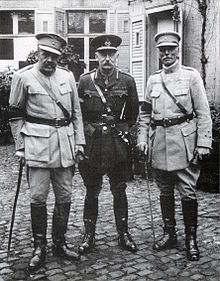
The Carnation Revolution, also known as the 25 April, was a military coup by military officers that overthrew the authoritarian Estado Novo government on 25 April 1974 in Lisbon, producing major social, economic, territorial, demographic, and political changes in Portugal and its overseas colonies through the Processo Revolucionário Em Curso. It resulted in the Portuguese transition to democracy and the end of the Portuguese Colonial War.

Marcelo José das Neves Alves Caetano was a Portuguese politician and scholar. He was the second and last leader of the Estado Novo after succeeding António de Oliveira Salazar. He served as prime minister from 1968 to 1974, when he was overthrown during the Carnation Revolution.

The Estado Novo was the corporatist Portuguese state installed in 1933. It evolved from the Ditadura Nacional formed after the coup d'état of 28 May 1926 against the unstable First Republic. Together, the Ditadura Nacional and the Estado Novo are recognised by historians as the Second Portuguese Republic. The Estado Novo, greatly inspired by conservative and autocratic ideologies, was developed by António de Oliveira Salazar, who was President of the Council of Ministers from 1932 until illness forced him out of office in 1968.
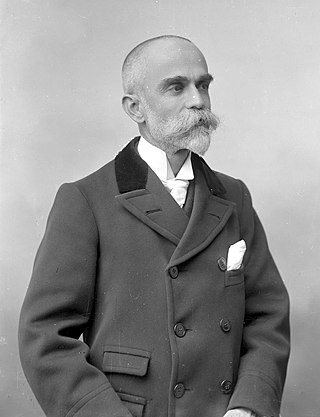
Bernardino Luís Machado Guimarães, GCTE, GCL, was a Portuguese political figure, the third and eighth president of Portugal.

Francisco Higino Craveiro Lopes was a Portuguese Air Force officer and politician who served as the 12th president of Portugal from 1951 to 1958.
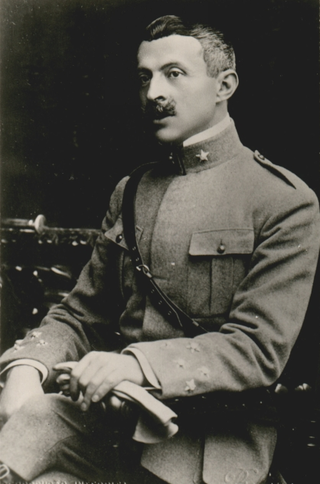
Sidónio Bernardino Cardoso da Silva Pais was a Portuguese politician, military officer, and diplomat, who served as the fourth president of the First Portuguese Republic in 1918. One of the most divisive figures in modern Portuguese history, he was referred to by the writer Fernando Pessoa as the "President-King", a description that stuck in later years and symbolizes his regime.

António Sebastião Ribeiro de SpínolaGCTE ComA was a Portuguese military officer, author and conservative politician who was the first President of Portugal after the dissolution of the Estado Novo government. He played an important role in Portugal's transition to democracy following the Carnation Revolution.

António Óscar de Fragoso Carmona was a Portuguese Army officer and politician who served as prime minister of Portugal from 1926 to 1928 and as the 11th president of Portugal from 1926 until his death in 1951. He also served as the Minister of War, in late 1923 and in 1926, and as a Minister of Foreign Affairs in 1926.

This is a historical timeline of Portugal.
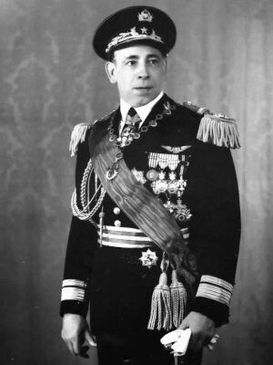
Humberto da Silva Delgado was a General of the Portuguese Air Force, diplomat and politician.

José Mendes Cabeçadas Júnior, OTE, ComA, MPCE, commonly known as Mendes Cabeçadas, was a Portuguese Navy officer, Freemason and republican, having a major role in the preparation of the revolutionary movements that created and ended the Portuguese First Republic: the 5 October revolution in 1910 and the 28 May coup d'état of 1926. In the outcome he became the minister of finance for one day only on 30 May 1926, then becoming interim minister for foreign affairs for two days between 30 May and 1 June, after which he again became the minister for finance on the same day. He served as the ninth president of Portugal and prime minister for a brief period of time.
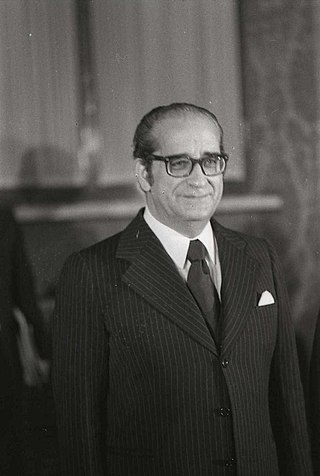
Francisco da Costa Gomes, ComTE, GOA was a Portuguese military officer and politician, the 15th president of Portugal.

Afonso Augusto da Costa, GCTE, GCL was a Portuguese lawyer, professor and republican politician.

The Ditadura Nacional was the name given to the regime that governed Portugal from 1926, after the re-election of General Óscar Carmona to the post of President, until 1933. The preceding period of military dictatorship that started after the 28 May 1926 coup d'état is known as Ditadura Militar. After adopting a new constitution in 1933, the regime changed its name to Estado Novo. The Ditadura Nacional, together with the Estado Novo, forms the historical period of the Portuguese Second Republic (1926–1974).
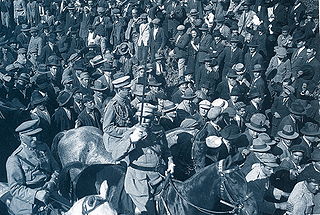
The 28 May 1926 coup d'état, sometimes called 28 May Revolution or, during the period of the corporatist Estado Novo, the National Revolution, was a military coup of a nationalist origin, that put an end to the unstable Portuguese First Republic and initiated 48 years of corporatist and nationalist rule within Portugal. The regime that immediately resulted from the coup, the Ditadura Nacional, would be later refashioned into the Estado Novo, which in turn would last until the Carnation Revolution in 1974.

José Vicente de Freitas, 2nd Baron of Freitas GCTE was a Portuguese military officer and politician.

General Artur Ivens Ferraz, was a Portuguese military officer and politician. He served in the Portuguese Expeditionary Force during the Portuguese participation in World War I, in France. He was later Governor-General of Portuguese Mozambique, and was Minister of Trade, Colonies and Finances. He also served as Prime Minister from 8 July 1929 to 21 January 1930. He later occupied the post of general administrator of the Army and head of the Armed Forces.
Events in the year 1926 in Portugal.

